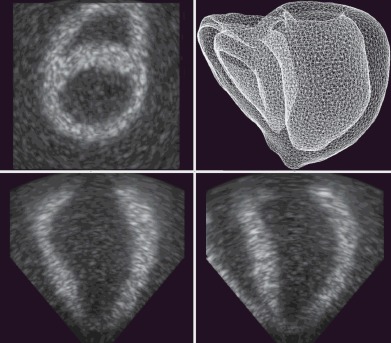Evaluation of the Speckle Tracking pipeline published

A deep study about the influence of the different steps of a speckle tracking (ST) pipeline in Echocardiography has been published in the international journal Medical Image Analysis: "Influence of Ultrasound Speckle Tracking Strategies for Motion and Strain Estimation".
Highlights:
- We provide a complete analysis of the influence of the different steps in a ST pipeline.
- The study provides a methodology for the analysis of Speckle Tracking systems.
- It is specifically designed to provide an easy and systematic way to include other philosophies.
- They can be further use to evaluate and design new strategy into a Speckle Tracking system.
Abstract
Speckle Tracking is one of the most prominent techniques used to estimate the regional movement of the heart based on ultrasound acquisitions. Many different approaches have been proposed, proving their suitability to obtain quantitative and qualitative information regarding myocardial deformation, motion and function assessment. New proposals to improve the basic algorithm usually focus on one of these three steps: (1) the similarity measure between images and the speckle model; (2) the transformation model, i.e. the type of motion considered between images; (3) the optimization strategies, such as the use of different optimization techniques in the transformation step or the inclusion of structural information. While many contributions have shown their good performance independently, it is not always clear how they perform when integrated in a whole pipeline. Every step will have a degree of influence over the following and hence over the final result. Thus, a Speckle Tracking pipeline must be analyzed as a whole when developing novel methods, since improvements in a particular step might be undermined by the choices taken in further steps. This work presents two main contributions: (1) We provide a complete analysis of the influence of the different steps in a Speckle Tracking pipeline over the motion and strain estimation accuracy. (2) The study proposes a methodology for the analysis of Speckle Tracking systems specifically designed to provide an easy and systematic way to include other strategies. We close the analysis with some conclusions and recommendations that can be used as an orientation of the degree of influence of the models for speckle, the transformation models, interpolation schemes and optimization strategies over the estimation of motion features. They can be further use to evaluate and design new strategy into a Speckle Tracking system.
